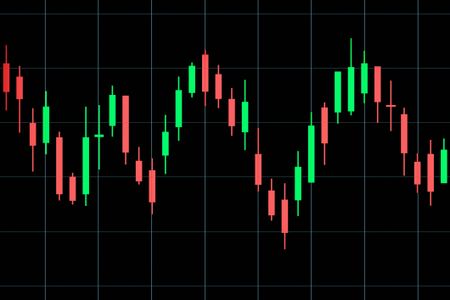The 6 Best Vanguard Index Funds for 2019 and Beyond
Investing icon Warren Buffett advises investors to stash 90% of their money in a Standard & Poor’s 500-stock index fund and keep the rest in short-term government bonds.


Investing icon Warren Buffett advises investors to stash 90% of their money in a Standard & Poor’s 500-stock index fund and keep the rest in short-term government bonds. That’s a good start for investors who want to keep things simple, but it limits your investments to large U.S. companies. So today, we’ll show you how the best Vanguard index funds can add more portfolio diversification while still keeping your strategy simple.
Rather than help to pay the huge salaries of high-powered fund managers, investors can buy index funds, which simply aim to mirror the returns of their benchmark indexes. Why? Because roughly two-thirds of actively managed funds fail to match or beat their indexes.
It’s not that fund managers are stupid or incompetent. It’s because picking mispriced stocks is incredibly difficult. It’s not surprising that the average fund lags its benchmark index by just about what it charges investors in annual expenses (a little more than 1%).
Vanguard – whose founder, John Bogle, just passed away – invented the index fund and still does the best job operating them. Vanguard index fund fees are always, if not the lowest, within a few basis points (a basis point is one one-hundredth of a percent) of the lowest. What’s more, its managers are skilled at running index funds, so they don’t stray far from the performance of the index they track – a job that actually sounds a lot easier than it is.
Here are six of the best Vanguard index funds you can use to build a solid portfolio. This includes a general suggestion for a percentage of your assets to allocate to each one. And if you prefer exchange-traded funds to mutual funds, that’s OK too – I’ll offer up the ETF version of each fund.
Disclaimer
Data is as of Jan. 16, 2019. Yields represent the trailing 12-month yield, which is a standard measure for equity funds. This portfolio would cost roughly 0.06% annually. On a $10,000 investment, you’d pay Vanguard around $6. By contrast, a similar average actively managed fund portfolio would charge about 1.2% annually, or $120 on a $10,000 investment.

Vanguard S&P 500 Index Admiral
- Market value: $400.6 billion
- Yield: 2.1%
- Expenses: 0.04%
- Suggested allocation: 35%
- ETF alternative: Vanguard S&P 500 ETF (VOO)
Start with the Vanguard S&P 500 Index Admiral (VFIAX, $241.71).
The S&P 500 is a fine index of U.S. large companies along with a sprinkling of midsize stocks. It’s also more accessible to beginner investors since Vanguard lowered its initial minimum investment to $3,000 on this and all the other index-fund Admiral shares in November.
VFIAX does an excellent job of tracking its benchmark, as do all the funds I’m recommending. Turnover is only about 5% annually, which helps make the fund tax-efficient. Indeed, it has not distributed a taxable capital gain since 2000.
Like all the index funds in this article, it’s market capitalization-weighted, meaning that bigger stocks get a bigger weighting in the fund. Top holdings as of the most recent info include Microsoft (MSFT), Apple (AAPL) and Google parent Alphabet (GOOGL).

Vanguard Mid-Cap Index Admiral
- Market value: $87.0 billion
- Yield: 1.8%
- Expenses: 0.05%
- Suggested allocation: 10%
- ETF alternative: Vanguard Mid-Cap ETF (VO)
Midsize and smaller stocks have trailed the S&P 500 for much of the past year, but over the long term they have done slightly better than larger stocks.
That’s why it should pay off to invest in Vanguard Mid-Cap Index Admiral (VIMAX, $181.01), which tracks the CRSP U.S. Midcap Index. Vanguard has switched the indexes many of its funds track to CRSP and other providers that offer excellent indexes for low costs.
Because VIMAX targets midsize companies, its holdings tend to be a blend of a few familiar brands, as well as plenty of lesser-known companies. Top holdings at the moment include medical-equipment company Edwards Lifesciences (EW), software firm Red Hat (RHT) – which just approved a $34 billion acquisition bid from International Business Machines (IBM) – and financial-services tech company Fiserv (FISV).
Expect Vanguard Mid-Cap Index to be somewhat more volatile than the S&P 500 and to lag the large-cap index in lousy markets.

Vanguard Small-Cap Index Admiral
- Market value: $77.9 billion
- Yield: 1.7%
- Expenses: 0.05%
- Suggested allocation: 10%
- ETF alternative: Vanguard Small-Cap ETF (VB).
For small-cap stocks, look to Vanguard Small-Cap Index Admiral (VSMAX, $68.10), which tracks the CRSP U.S. Small Cap Index. The average market cap in the fund is $3.5 billion, which admittedly is higher than many small-cap funds.
VSMAX is heaviest in financial stocks (26.3%) and industrial stocks (19.6%), though the top holdings have a wide blend of businesses that include Burlington Stores (BURL) of inexpensive-coat fame, NRG Energy (NRG) and commercial real estate play W.P. Carey (WPC).
Over the long-term, small caps have handily beaten stocks of larger companies, but they have tended to trail large caps in bear markets.

Vanguard Developed Markets Stock Index Admiral
- Market value: $100.7 billion
- Yield: 3.3%
- Expenses: 0.07%
- Suggested allocation: 17%
- ETF alternative: Vanguard FTSE Developed Markets ETF (VEA)
Foreign stocks have badly lagged U.S. stocks for the past decade. Still, I wouldn’t neglect roughly half the world’s stock market capitalization. What’s more, by virtually every measure of value, foreign stocks are currently cheaper than U.S. stocks.
For developed-market stocks, look to Vanguard Developed Markets Stock Index Admiral (VTMGX, $12.49). The fund tracks the FTSE Developed All Cap ex US index, which invests in 24 foreign countries, including most of Europe and parts of Asia, as well as Australia and Canada.
This is a large-cap-heavy fund that features several blue-chip multinationals among its top holdings. Heaviest weights at the moment go to British-Dutch energy titan Royal Dutch Shell (RDS.A), Swiss foods company Nestle (NSRGY) and South Korea’s Samsung Electronics.

Vanguard Emerging Markets Stock Index Admiral
- Market value: $75.6 billion
- Yield: 2.9%
- Expenses: 0.14%
- Suggested allocation: 8%
- ETF alternative: Vanguard FTSE Emerging Markets ETF (VWO)
Emerging markets have trailed U.S. stocks badly, too. But the potential of emerging economies in Asia, Latin American and Eastern Europe is too big to overlook. Just expect them to be streaky.
What’s nice is that at the moment, emerging markets are on average currently cheaper than even foreign developed stocks.
- Vanguard Emerging Markets Stock Index Admiral (VEMAX, $33.26) is your ticket to this sector. The fund follows the FTSE Emerging Markets All Cap China A Inclusion Index, which earns that name because it includes China A shares – stocks that trade on the country’s mainland exchanges and until fairly recently were restricted mainly to Chinese investors.
Unfortunately for this fund, China, which represents just more than a third of all assets, is in a funk. So are many other emerging-market bourses. Over time, however, the high exposure to China – including significant weights in companies such as Tencent Holdings (TCEHY) and Alibaba (BABA) – likely will become a plus.

Vanguard Short-Term Corporate Bond Index Admiral
- Market value: $25.3 billion
- SEC yield: 3.6%*
- Expenses: 0.07%
- Suggested allocation: 20%
- ETF alternative: Vanguard Short-Term Corporate Bond ETF (VCSH)
Don’t neglect bonds, even as interest rates rise. I favor relatively high-quality, short-term funds such as Vanguard Short-Term Corporate Bond Index Admiral (VSCSX, $21.28), which tracks the Bloomberg Barclays U.S. 1-5 Year Corporate Bond Index.
The portfolio’s average credit quality is a relatively safe single-A, although it has 47% of assets in BBB bonds. Its duration is 2.7, which implies that if bond yields rise by one percentage point, VSCSX will lose only 2.7% off its price – of course, its yield to new investors will rise further, too.
Your return on this fund is unlikely to be much more than 2% or 3% annually, but it provides much-needed ballast for your portfolio.
One last note about allocation percentages: For investors more than 15 years from retirement, the mix in this article of 80% stocks, 20% bonds is a sound one. Once you reach 15 years from retirement, take 5% from your stock funds and put it in the bond fund. Repeat every five years until you have 60% in stocks and 40% in bonds, which is a sensible mix for the early and middle years of retirement. Remember, too, to rebalance every year.
* SEC yield reflects the interest earned after deducting fund expenses for the most recent 30-day period and is a standard measure for bond and preferred-stock funds.
- Steve Goldberg is an investment adviser in the Washington, D.C., area.
Get Kiplinger Today newsletter — free
Profit and prosper with the best of Kiplinger's advice on investing, taxes, retirement, personal finance and much more. Delivered daily. Enter your email in the box and click Sign Me Up.

-
 Stagflation: What It Is and Why Retirees Should Care
Stagflation: What It Is and Why Retirees Should CareStagflation — the economic bogeyman of the 1970's — may return to the US. Here's what it could mean to your retirement.
By Donna Fuscaldo Published
-
 Why Losing Your Job Could Be the Best Opportunity to Plan Your Future
Why Losing Your Job Could Be the Best Opportunity to Plan Your FutureAmid this uncertainty lies an opportunity for strategic reassessment and personal growth.
By Mario Hernandez Published
-
 Stock Market Today: Stocks Are Mixed Before Liberation Day
Stock Market Today: Stocks Are Mixed Before Liberation DayMarkets are getting into the freewheeling rhythm of a second Trump administration.
By David Dittman Published
-
 Stock Market Today: Dow Rises 854 Points From Its Intraday Low
Stock Market Today: Dow Rises 854 Points From Its Intraday LowIf there's one thing markets hate, it's uncertainty. But uncertainty is all they're getting these days.
By David Dittman Published
-
 Stock Market Today: Dow Sinks 715 Points as Inflation Unrest Grows
Stock Market Today: Dow Sinks 715 Points as Inflation Unrest GrowsInflation worries are showing up in both hard and soft data.
By Karee Venema Published
-
 Stock Market Today: It's Going to Stay Choppy for Stocks
Stock Market Today: It's Going to Stay Choppy for StocksAuto-focus can show us a lot about uncertainty on the ground and in the stock market.
By David Dittman Published
-
 Stock Market Today: Auto Tariffs Send Stocks Lower
Stock Market Today: Auto Tariffs Send Stocks LowerThe main indexes snapped their win streaks after the White House confirmed President Trump will talk about auto tariffs after the close.
By Karee Venema Published
-
 Stock Market Today: Stocks Seesaw After Big Market Rally
Stock Market Today: Stocks Seesaw After Big Market RallyThe latest consumer confidence data showed sentiment remains low.
By Karee Venema Published
-
 Stock Market Today: Markets Celebrate Trump's Tariff Détente
Stock Market Today: Markets Celebrate Trump's Tariff DétenteConsumer discretionary stocks led 10 of the 11 S&P 500 sector groups well into the green.
By David Dittman Published
-
 Stock Market Today: Stocks Swing Higher After Early Slump
Stock Market Today: Stocks Swing Higher After Early SlumpNegative earnings reactions for Nike, FedEx and Micron kept pressure on the main indexes, though.
By Karee Venema Published
